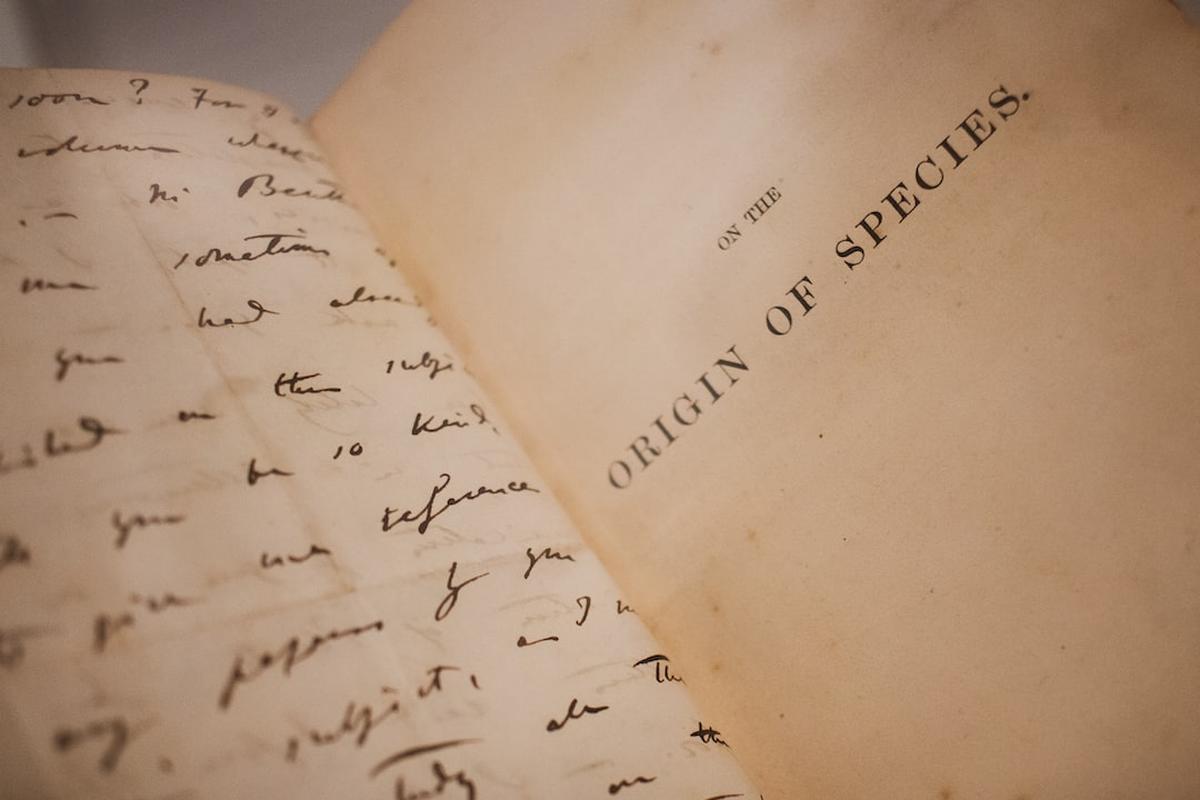In the grand tapestry of life on Earth, one theory stands as a cornerstone of our understanding: the theory of evolution. This concept, which has shaped our comprehension of biology, ecology, and even human history, owes much of its development to the work of Charles Darwin. Darwin’s contribution to the evolutionary theory is monumental, providing a robust framework for understanding the intricate and dynamic relationships among living organisms.
Brief Overview of the Theory of Evolution
The theory of evolution is a scientific explanation for the diversity of life on Earth. It posits that all living organisms have descended from common ancestors through a process of gradual change and adaptation over millions of years. This process, driven by natural selection, has led to the vast array of species we see today.
Charles Darwin and His Contribution to Evolutionary Theory
Charles Darwin, a 19th-century naturalist, is often credited as the father of evolutionary theory. His groundbreaking work, “”On the Origin of Species,”” laid the foundation for modern evolutionary biology. Darwin proposed the concept of natural selection, where individuals with traits beneficial for their environment are more likely to survive and reproduce, passing these advantageous traits to their offspring.
Understanding the Theory of Evolution
To fully grasp the theory of evolution, it’s essential to understand its fundamental principles and mechanisms.
Definition and Explanation of Evolution
Evolution, in the simplest terms, is the process of change in all forms of life over generations. It’s a complex process that involves changes in genetic material, leading to variations in physical traits and behaviors among individuals of a species.
Natural Selection as a Mechanism of Evolution
Natural selection is the primary mechanism driving evolution. It’s a process where individuals with traits that enhance survival and reproduction are more likely to pass on their genes to the next generation. Over time, these advantageous traits become more common within the population, leading to evolutionary change.
The Role of Evidence in Supporting the Theory of Evolution
In the realm of science, evidence is paramount. It’s the backbone of any scientific theory, providing the necessary support and validation.
Importance of Evidence in Scientific Theories
Evidence provides the foundation for scientific theories. It allows scientists to test hypotheses, validate theories, and refine our understanding of the natural world. Without evidence, a theory remains just a hypothesis – an idea yet to be proven.
The Need for Multiple Lines of Evidence in Evolution
Given the complexity and vast timescale of evolution, multiple lines of evidence are necessary to support the theory. These include fossil records, biogeographical patterns, and anatomical similarities among different species, all of which collectively strengthen the theory of evolution.
Fossil Evidence: The Ancient Records of Evolution
Fossils serve as a window into the past, providing tangible evidence of life’s evolutionary journey.
Understanding Fossil Evidence
Fossils are the preserved remains or traces of animals, plants, and other organisms from the remote past. They provide a chronological record of life on Earth, capturing snapshots of evolution in progress.
How Fossil Evidence Supports the Theory of Evolution
Fossil evidence supports the theory of evolution by documenting the existence of extinct species that are clearly related to modern species. They reveal a pattern of gradual change and adaptation over time, consistent with the principles of evolution.
Notable Examples of Fossil Evidence
One of the most famous examples of fossil evidence is the transition from land-dwelling mammals to whales. Fossils of extinct species like Ambulocetus and Dorudon provide a clear sequence of adaptations leading to modern whales, demonstrating the power of natural selection.
Biogeographical Evidence: The Geographic Distribution of Species
Biogeography, the study of the distribution of species and ecosystems in geographic space and through geological time, provides another line of evidence for evolution.
Explaining Biogeographical Evidence
Biogeographical evidence refers to the patterns of species distribution across the globe. These patterns are shaped by many factors, including geographical barriers, climate, and evolutionary history.
How Biogeographical Evidence Supports the Theory of Evolution
Biogeographical evidence supports evolution by showing that closely related species are often found in close geographical proximity. This suggests that these species have a common ancestor and have diversified over time due to different selection pressures in different environments.
Significant Examples of Biogeographical Evidence
Darwin’s observations of finches in the Galapagos Islands serve as a classic example of biogeographical evidence. The different species of finches, each adapted to a specific diet and habitat, suggest a common ancestor from which they all evolved.
Anatomical Evidence: The Physical Traces of Evolution
Anatomical evidence, found in the physical traits of organisms, provides another crucial piece of the evolutionary puzzle.
Understanding Anatomical Evidence
Anatomical evidence refers to the physical features of organisms. These can include structures with similar design but different functions (homologous structures), structures with similar functions but different designs (analogous structures), and structures with no current function (vestigial structures).
How Anatomical Evidence Supports the Theory of Evolution
Anatomical evidence supports evolution by demonstrating shared ancestry among different species. Homologous structures suggest a common ancestor, while vestigial structures indicate an evolutionary past where these features had a function.
Noteworthy Examples of Anatomical Evidence
The forelimbs of mammals serve as a prime example of homologous structures. Despite their different functions, the basic bone structure remains the same, suggesting a common ancestor. Vestigial structures, like the human appendix, hint at our evolutionary past.
The Interplay of Fossil, Biogeographical, and Anatomical Evidence
These three lines of evidence – fossil, biogeographical, and anatomical – work in concert to provide a comprehensive picture of evolution.
How These Three Lines of Evidence Complement Each Other
Each line of evidence complements the others, providing a more complete and robust understanding of evolution. Fossil evidence provides a chronological record of evolutionary change, biogeographical evidence reveals the influence of environment on evolution, and anatomical evidence demonstrates the physical manifestations of evolution.
The Collective Strength of Multiple Lines of Evidence
The collective strength of these multiple lines of evidence makes the theory of evolution one of the most well-supported theories in science. They provide a compelling case for the common ancestry of life and the power of natural selection.
Criticisms and Counterarguments Against the Theory of Evolution
Despite the overwhelming evidence, the theory of evolution has faced criticisms and counterarguments. However, these have been addressed and refuted by the scientific community.
Common Criticisms of Evolution
Some common criticisms of evolution include the perceived lack of transitional fossils, the argument of complexity (i.e., complex structures like the eye could not have evolved), and the misunderstanding that evolution is just a “”theory.””
How Evidence Addresses These Criticisms
Each of these criticisms has been addressed by evidence. The fossil record, though incomplete, contains numerous transitional fossils. The complexity argument overlooks the power of gradual, incremental change over vast timescales. And the term “”theory”” in science refers to a well-substantiated explanation of some aspect of the natural world, not a guess or a hunch.
The Ongoing Relevance of Darwin’s Theory of Evolution
Darwin’s theory of evolution continues to be a vital part of modern biology and medicine, guiding research and providing insights into the nature of life.
Evolution’s Impact on Modern Biology and Medicine
The theory of evolution has profound implications for modern biology and medicine. It helps us understand the origins and spread of diseases, the development of drug resistance, and the interconnectedness of life.
The Future of Evolutionary Studies
The future of evolutionary studies is promising, with new technologies and methodologies allowing us to delve deeper into the mechanisms of evolution. As we continue to unravel the complexities of life, Darwin’s theory will undoubtedly remain a guiding light.
Conclusion
In conclusion, the theory of evolution, supported by fossil, biogeographical, and anatomical evidence, provides a comprehensive explanation for the diversity and interconnectedness of life on Earth. Despite criticisms, the evidence for evolution is robust and continues to grow, solidifying its place as a cornerstone of modern science. The enduring legacy of Darwin’s theory continues to shape our understanding of the natural world, demonstrating the power and elegance of scientific inquiry.
Frequently Asked Questions
What is the theory of evolution?
The theory of evolution is a scientific explanation for the diversity of life on Earth. It suggests that all living organisms have descended from common ancestors through a process of gradual change and adaptation over millions of years.
What is natural selection?
Natural selection is the primary mechanism driving evolution. It’s a process where individuals with traits that enhance survival and reproduction are more likely to pass on their genes to the next generation.
What are the three key pieces of evidence for evolution?
The three key pieces of evidence for evolution are fossil records, biogeographical patterns, and anatomical similarities among different species.
How does fossil evidence support the theory of evolution?
Fossil evidence supports the theory of evolution by documenting the existence of extinct species that are clearly related to modern species. They reveal a pattern of gradual change and adaptation over time, consistent with the principles of evolution.
What is biogeographical evidence?
Biogeographical evidence refers to the patterns of species distribution across the globe. These patterns are shaped by many factors, including geographical barriers, climate, and evolutionary history.
How does anatomical evidence support the theory of evolution?
Anatomical evidence supports evolution by demonstrating shared ancestry among different species. Homologous structures suggest a common ancestor, while vestigial structures indicate an evolutionary past where these features had a function.
References
- Darwin, C. (1859). On the Origin of Species. John Murray.
- Futuyma, D. J., & Kirkpatrick, M. (2017). Evolution. Sinauer Associates.
- Gould, S. J. (1994). The evolution of life on the earth. Scientific American, 271(4), 84-91.
- Mayr, E. (2001). What evolution is. Basic Books.
- Prothero, D. R. (2007). Evolution: What the fossils say and why it matters. Columbia University Press.
- Ridley, M. (2004). Evolution. Blackwell.








